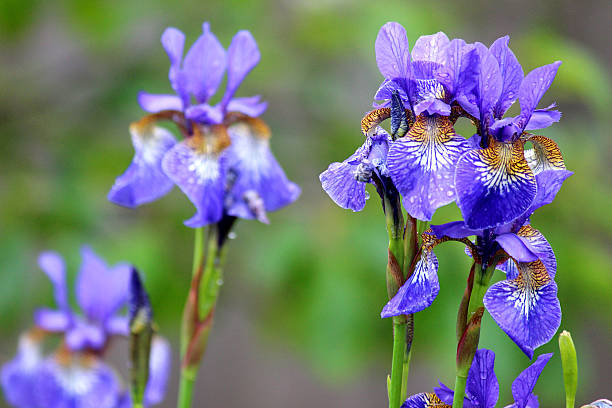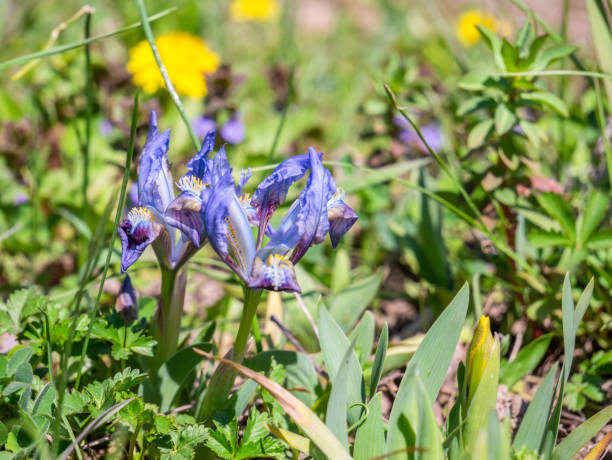How To Get Iris Bloom Again: 9 Tips to Grow Your Flowers
Suppose you are looking to get your iris to bloom again. In that case, you should start by checking the depth of the rhizome, adequate sunlight, protecting it against spring frost, fertilizing with adequate nutrients, deadhead dying flowers, preventing green foliage removal, reducing overcrowding, limiting competition, and dividing the iris. Iris will typically bloom again within a few months, so keep an eye out for new blooms and enjoy the beauty of a healthy iris garden!
Iris can be a beautiful flower, described as having an earthy, floral, and slightly sweet smell, but it can become a sad sight if it is not given the proper care. So keep reading on how to get your iris to bloom once again.

Table of Contents
Ways on Getting Your Iris Bloom Again
Rhizome Depth
Rhizomes are plant stems found on the surface or below ground and are referred to as rhizomes. The plant’s roots will emerge from a network of nodes in this structure. Because they grow perpendicular to the ground, they’re one of a kind.
As a result, the first thing you should do is check the root depth. Irises will not bloom if the rhizomes are buried too deeply. Unlike the plant’s corms or bulbs, Rhizomes should be placed in the ground. You’re doing it wrong if you’re putting them in too far. Keep half of the rhizome above the surface if you’re planting in clay soil.
Focus on the Sunlight
One of the most common reasons why irises do not bloom is that they are frequently kept in the shade. Your irises should receive plenty of sunlight, so make sure they get it! The majority of iris cultivars require at least six hours of direct sunlight each day to thrive. As a result, this is ultimately what causes the flower to open.
Irises planted in shady areas may benefit from relocating to an open, sunny spot where they can receive additional sunlight.
Protection Against Spring Frost
An early spring frost can be lethal to your irises if you don’t take precautions. The early spring frost must be avoided if you want your iris to bloom again. You must be extremely careful and protective of the plant once it has produced buds.
If this doesn’t happen, the buds will die before they can open up and bloom. A burlap sheep or any light fabric can be draped over a pole that encircles the iris for protection. The plant should be protected from the cold weather by a thick layer of mulch.
Since frost usually occurs at night, make sure you have something covering it. Afterward, you can remove your covers to get some much-needed sunlight in the morning.
Feed Your Iris With Nutrients
Irises should be fertilized in the early spring when they are just starting to grow. You should fertilize the irises a month after the first bloom to encourage them to bloom again. Thus, the plant’s well-being and quality will both be preserved. Always use a fertilizer labeled for use with bulbs when planting your garden. A “6-10-10” label is a good indicator to look for. If you add more than is recommended on the label, the plant may die due to over-watering. When fertilizing a plant, be sure to wet it thoroughly with a hose or at least one inch of water.

Deadhead Faded Blooms
Removing faded iris blooms requires great care. The stalks can be cut with a pair of scissors. You can also use a hand clipper for the same purpose just fine. The iris plant will be able to rebloom more quickly if the dead flowers are removed, and you may also see different varieties.
Green Foliage Should Not Be Removed
It’s important to keep in mind not to remove any green foliage. When the rhizomes are killed, the plant will be deprived of the energy it needs for the next flowering period.
Iris growers often cut the foliage too quickly, which is one of the main reasons they don’t get flowers. When the foliage is lush and green, don’t cut it down or remove it.
Reduce Overcrowding
As the rhizomes grow, they’ll clog up the surrounding area as they spread out. As a result, they become too dependent on each other, stifling their progress.
Rhizomes must be separated from each other by removing their roots. You should replant them as soon as possible after separating them with a knife. Rhizomes will have merged by the time this is done, so it should be done every three to four years. After you’ve split them successfully, they’ll bloom better.
Limit Competition
When sharing the resources beneath the soil, plants can be a little overzealous. Having other plants near your irises means that the soil’s resources, such as nutrients, are likely to be limited.
As a rule of thumb, get rid of weeds and any other plants you think may deprive your iris of resources under the soil. Some of the competition could lead to shades that limit sunlight. These unhealthy conditions would cause your plants to go dormant, resulting in no flowers on your plants.
Divide the Iris Flowers
Even when there is a lot of green growth, the best way to encourage irises to bloom is to divide them. The plants should be moved around the garden if they aren’t producing as many flowers as they should. To give the plant plenty of room to grow, remove the dead foliage in the late summer and cut it back by at least two-thirds.
Remember the tips listed above if you want your irises to bloom again. The health of your plants depends on following these guidelines and checking on them frequently.
